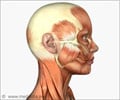A University of Colorado at Boulder research team has identified a type of skeletal muscle stem cell that contributes to the repair of damaged muscles in mice...
A University of Colorado at Boulder research team has identified a type of skeletal muscle stem cell that contributes to the repair of damaged muscles in mice, which could have important implications in the treatment of injured, diseased or aging muscle tissue in humans, including the ravages of muscular dystrophy.
The newly identified stem cells are found within populations of satellite cells located between muscle fibers and the surrounding connective tissue that are responsible for the repair and maintenance of skeletal muscles, said Professor Bradley Olwin of CU-Boulder's molecular, cellular and developmental biology department.When muscle fibers are stressed or traumatized, satellite cells divide to make more specialized muscle cells and repair the muscle, said Olwin. The stem cell population identified by the CU team within the satellite cells -- dubbed ''satellite-SP'' cells -- were shown to renew the satellite cell population after injection into injured muscle cells, contributing to recovery of muscle tissue in the laboratory mice.
''This research shows how satellite cells can maintain their populations within injured tissues,'' said Olwin. ''The hope is this new method will allow us to repair damaged or diseased skeletal muscle tissue.''
A paper on the subject was published in the March 5 issue of the journal Cell Stem Cell. Co-authors on the study included the MCD biology department's Kathleen Tanaka, John Hall and Andrew Troy, as well as Dawn Cornelison from the University of Missouri and Susan Majka from the University of Colorado Denver.
Stem cells are distinguished by their ability to renew themselves through cell division and differentiate into specialized cell types. In healthy skeletal muscle tissue, the population of satellite cells is constantly maintained, leading the CU-Boulder team to believe that at least some of the satellite cell population in the mouse study included stem cells.
For the study, the researchers injected 2,500 satellite-SP cells into a population of satellite cells within injured mouse muscle tissue. They found that 75 percent of the satellite cells that reproduced were derived from the previous satellite-SP cells injected into the tissue. The results demonstrated the injected satellite-SP cells were renewing the satellite cell pool, Olwin said.
Advertisement
The research has implications for a number of human diseases, he said. In muscular dystrophy, the loss of a protein called dystrophin causes the muscle to literally tear itself apart, a process that cannot be repaired without cell-based intervention. Although injected cells will repair the muscle fibers, maintaining the muscle fibers requires additional cell injections.
Advertisement
SRM













